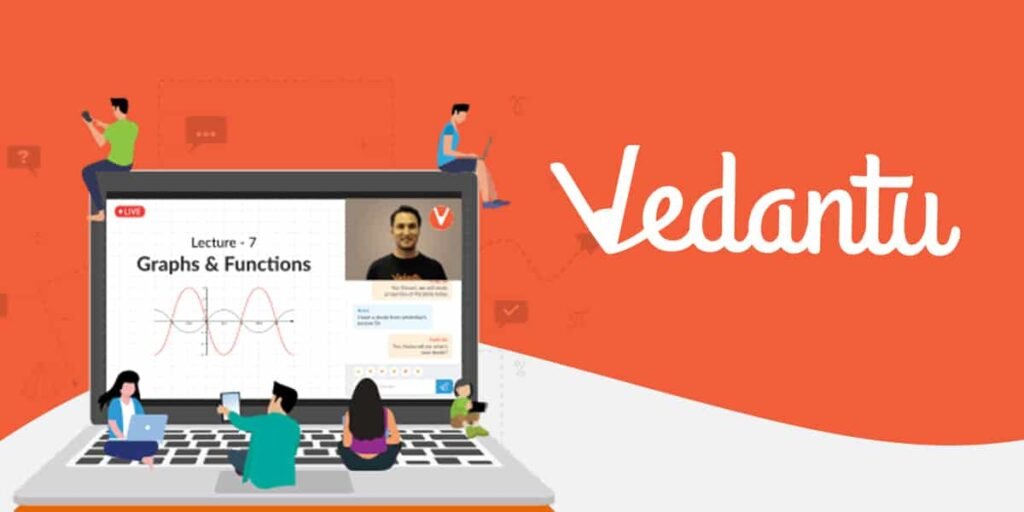Best Online Teaching Platforms
Teaching has always been regarded as a noble occupation. Education and learning are vital components of any person’s life. They aid in the development of character and personality, as well as the creation of a life for yourself. Even the profession of teaching has had to change its definition as a result of modern technology and the way the world is moving forward with online education. From classroom teaching to online teaching, the world is rapidly moving forward, as evidenced by the availability of a number of online teaching platforms that offer a variety of online courses and certifications for students.

What is the Best Way to Begin Using Online Teaching Platforms?
No matter what topic you enjoy sharing valuable information about, online teaching platforms can help you build a profitable business. Here are some pointers to help you get started:
Consider your Objectives and make a Strategy
You should be aware of the objectives of your course. Consider what it’s for. For instance, you might want it to be a supplement to an existing course.
Decide whether you want to make it for advanced or novice users. You should outline your weekly topics to cover when preparing a course plan. This will be used to collect resources for your lessons.
Gather Tools
Choose an online teaching platform. There are numerous platforms that are simple to use even for non-tech savvy individuals. Consider what other software and hardware you’ll require. Microphones, screen casting tools, and video cameras are just a few examples.
You’ll need a strong Internet connection because most platforms are web-based. Some may already be available, but you can choose to limit your content or buy them for others.
Recognize the Time Requirements
You should schedule the time you’ll need to create videos and curate other content for your lessons on a daily basis. Consider how much time you’ll spend editing, uploading, and selling your work.
Finally, get going. You will only get better once you begin. There are a number of teacher resources available on the internet to assist you in developing your course. For improvements, solicit feedback from your social circle.
List of Best Online Teaching Platform
So, what are some of the different online teaching platforms that can be used to become an online teacher? In this article, we’ve compiled a list of online teaching platforms that allow you to collaborate with them and bring your passion for teaching to life. Let’s take a look at each of these online teaching platforms and see how you can use them as a foundation for your classes.
1. Byju’s
Byju’s is a one-to-one teaching platform that allows teachers to teach different subjects such as math and science to school students all over the world.
The curriculum is pre-designed, and all you have to do before teaching is preview the class materials. You’ll also have to clear up students’ doubts and understand common misunderstandings.
How to Start with Byju’s
To participate in Byju’s selection rounds, you must be a graduate. You will receive a call/email once you have registered. You will be assigned to beginner, intermediate, or advanced levels based on your interview performance and other factors such as availability.
Teachers have short-term contracts and must notify their supervisors in advance if they wish to take a break during this time. You can teach any student who registers for your class. They just released Byju’s Neo Platform, which has a lot of new features.
2. Vedantu Teaching
Vedantu Teaching is an online tutoring platform based in India that allows anyone to teach what they know via live video conferences. You can earn up to INR 75,000 per month if you are available for at least 3 hours daily between 4 and 10 p.m. IST.
It provides educators with visual aids such as whiteboards. Physics, Hindi, Chemistry, Sanskrit, Biology, Math, English, Computer Science, French, and other subjects are commonly studied by students. Educators can also receive training and certification.

How to Start with Vedantu
Fill out a simple application form to apply. Experts will review this application. Shortlisted teachers must choose a topic for a teaching demonstration to the experts.
If you are chosen, you will be onboarded after you complete your profile and gather the necessary documents. Finally, you’ll attend a training and induction webinar before beginning online sessions.
3. Teachable
Educators can use the Teachable platform to create online lessons and coaching classes on topics such as math, programming, and cooking. You can use quizzes, discussions, and other methods to get to know your students.
You also have control over the branding, including the logo and style, as well as other customizable features. In addition to course revenue, learner analytics, and other features, the educational platform can help you grow.
How to Start with Teachable
There are no prerequisites for registering. With an email address and a school name, you can get a free trial of the premium plans.
To create the courses they want, instructors must pay a monthly fee. Payment for your courses can be set up. The transaction rate for free courses is INR 73.465 + 10%, while paid courses have a transaction rate of INR 73.465 + 10%.
4. CourseCraft
Artists and creative individuals can quickly create courses with quizzes, forums, and other features using the CourseCraft online teaching platform. As far as course content is concerned, you can use text, videos, and images.
A dashboard is provided for scheduling lessons, managing payments, and other functions. Custom branding and discounts are available to instructors. Working with your students can help you build a large community.
How to Start with CourseCraft
On this educational platform, teachers can choose between a free or premium monthly subscription plan. To quickly gather learners, start with a sign-up page and free sample lessons.
You can make self-paced courses and charge for them. Monthly memberships can provide a steady source of income.
5. Unacademy Teachers
Unacademy is a teaching platform for teachers that allows them to create content on any educational topic in existing or new categories. Each video is no longer than 15 minutes, and the number of lessons in a course varies depending on the target audience.
Whiteboard notes, handwritten notes, PDFs, presentations, and more can all be added. There are no monetary rewards for educators, but they do receive incentives based on the total number of views their videos receive.
How to Start with Unacademy
From the app store, get the Unacademy Educator App. Fill out your profile and bio information, as well as the subjects you’d like to teach. Then, in landscape mode, create a 3-minute teaching demo on an educational topic that appeals to the target audience. Presentations, images, and PDFs can all be added.
Submit your recording once you’ve finished it. You will be rejected if you do not follow guidelines such as avoiding copyright images, background noise, and more. You will be assigned an educator manager if you are chosen. You can also follow the guidelines and send an email with the relevant attachments.
6. Lingoda
Lingoda is an educational platform based in Europe where native speakers can teach a language from beginner to advanced levels. You can teach 3 to 5 students at a time in English, Spanish, French, and German.
There is no time commitment required. Classes can be scheduled at your leisure. Your pay is determined by your preferred language, qualifications, and location.
How to Start with Lingoda
You must have a C2 level of proficiency in the target language and two years of teaching experience. A certificate to teach the language as a foreign language is also required. You should be able to work as a freelancer without any legal restrictions.
You can apply online and be interviewed if you meet the requirements. Then finish the online onboarding process and schedule classes ahead of time. After you’ve committed, you’ll need to prepare for the lesson and then begin teaching.
7. Podia
Podia is a paid online teaching platform with features such as course creation, data and payment management, work marketing, and more. There are no page limits, and you can create mobile-friendly pages. Downloads can be made to collect leads or to sell.
It provides video hosting, multiple-choice quizzes, and other services. You have the option of creating different membership plans based on your needs.
How to Start with Podia
By creating an account, you can begin a 14-day free trial. After that, you can select a monthly plan starting at INR 2866.890. You can get answers to your questions via live chat and email. Affiliate marketing can help you earn extra money.
8. Ruzuku
Experts from various fields can create courses on the Ruzuku platform for online teaching. It makes displaying presentations, word documents, PDFs, and other files simple. You can hold teleconferences and video broadcasts.
Discussion prompts, forums, and other interactive features on this educational platform help to increase engagement. You can keep track of when students finish their activities, and they can keep track of their own progress. It also has customization options and a Mailchimp integration.
How to Start with Ruzuku
A 14-day free trial is available to teachers. The starting price is INR 5494.873. If you want, you can sign up for a free course on how to get started. Email, Skype, a knowledge base, a phone number, and other methods of communication are available for assistance.
9. Cuemath
In over 20 countries, Cuemath is a platform for teaching math and coding to K-12 students. At Cuemath, anyone who is good at high school level math/coding, has soft skills, and has empathy for children can become a teacher. It makes no difference if you have no prior teaching experience. There are one-on-one and group classes available.
How to Start with Cuemath
You must complete an online application and pay a one-time fee for training and certification if you are shortlisted after a background check. After completing a video assessment, you will begin training. There will be a final assessment that includes a full demonstration lesson. If you pass it, you can begin teaching three hours per day, six days per week.
10. Skillshare
Skillshare is a web-based learning platform that emphasises interactive instruction. Educators can use Skillshare to create 10- to 25-minute lessons with videos and class projects.
Working professionals, subject matter experts, and experts can all teach for free on topics such as design, writing, branding, photography, and more.
Skillshare is based on a subscription-based membership model. Teachers can earn money by referring students at a rate of $10 per student membership or royalties that vary depending on how much content is watched per month.
How to Start with Skillshare
To begin teaching, simply go to the official website. There is no approval or application process in place. You have complete control over when and how your classes are published.
Moderators go over each lesson that teachers submit to make sure it follows the rules. You can join a teacher’s community and receive support to help you grow your audience.
Best Online Teaching Platforms
Thank you very much for reading this article. If you need any information related to this article, you can tell us through the comment box. Do share this article with your friends or relatives. Thanks once again.
What is the Meaning of online teaching?
Online teaching is when you teach a course through a web-based portal from anywhere in the world
What is the best software for online teaching?
Some of the software used for online teaching includes Zoom, Teamlink, Jiomeet, and others.
What is the best free online learning platform?
If you want to start teaching for free, Udemy and Thinkific are excellent options. On either of these platforms, there are no prerequisites for teaching. If you only want to publish one course, Thinkific is ideal. On Udemy, you can add as many free courses as you want. For paid courses, however, Udemy receives a commission.
What is the best way to get started with an online teaching platform?
Select a topic and a target audience. Decide on the teaching platform you want to use and budget for the necessary hardware and software. Make a teaching plan or a course pattern. To market your course/live teaching, use the various options available on the platform as well as other ideas.
What is the best way to set up an online classroom?
The first step in creating an online classroom experience is to choose the tools and platform you’ll use. A webcam, microphone, and a clear backdrop, among other things, are required for classes.




